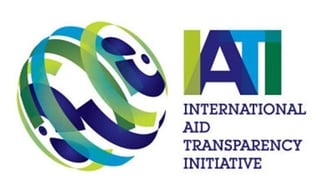
The date that all NGOs funded by the Dutch government need to start ‘opening’ their data is approaching fast: from 1 January 2016 onwards these NGOs are expected to start publishing data to the registry of the International Aid Transparency Initiative (IATI). On the verge of IATI’s use becoming a lot more widespread – at least in the Netherlands – it is time to stop and reflect: what has open data and IATI achieved thus far? How can some of IATI's challenges be addressed? And most importantly: what can NGOs do to turn IATI into a valuable instrument?
While in 2011 the launch of the IATI Standard – a framework in which donors, NGOs, and other players in the field of development aid can publish timely, comparable data about the projects they finance or implement - sparked expectations and excitement, the Standard has (by its own admission) had little impact thus far on the lives of development beneficiaries. While this is caused by several challenges (or: opportunities for improvement), this blog aims to highlight two – which from the perspective of impact measurement are most significant:
- publish what you achieve, not just what you fund
- combine IATI data with other data sets
Publish what you achieve, not just what you fund
So far, most data that has been published to IATI is about financial flows. While this is important – as it provides insight into how much money goes where – it doesn’t tell us whether these funds achieved what they were meant to achieve, or in fact had any effect on the beneficiaries that they were meant to help. Only when transparency in cash flows is combined with performance and results of programmes financed, can this lead to a more effective distribution of aid and development services, better management, improved use of funds, increased stakeholder engagement and ownership, overall better outcomes and more impact as a result of global knowledge sharing through (open development) data.
Unfortunately, although IATI provides fields in which publishers can record information about the results of projects or programs, according to the UNDP only two publishers are using these for more than 70 percent of their activities. For the main part however, improvements on this point lie in the hands of the publishers: they are the ones that need to start publishing more.
Combine data
Besides expanding the potential of IATI data by publishing achievements as well as financial flows, much can be gained by combining IATI data with data from other sources. To illustrate this: the UK imported its IATI data into Myanmar’s Mohinga portal, that tracks development effectiveness in Myanmar. By combining data on financial flows from the UK with data on effects of development services, a more complete picture is constructed on effectiveness of development budgets. In a world where data collection and technical possibilities are currently at an unprecedented level, the possibilities for combining these data to create valuable information are ever growing, as is the potential of IATI’s role.
Making it easier
Although other challenges remain - such as improving the data quality and raising more awareness for IATI and its potential - we believe that improving the information that can be drawn from the data by linking financial flows to achievements and other relevant data, is a very important first step.
In order to facilitate this, we are currently working on making the Sinzer software platform IATI compliant. This will enable organisations that use our platform to measure the impact of their programs, to link those achievements to related financial flows, and publish all relevant data to the IATI registry - in one go.
Interested in these (technical) possibilities? Contact us by clicking the button below
-1.jpg?width=232&name=GT%20Sinzer_logo_screen_descriptor%20(1)-1.jpg)


